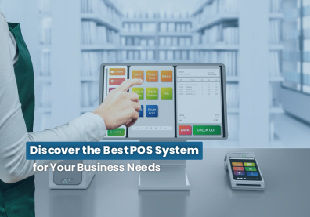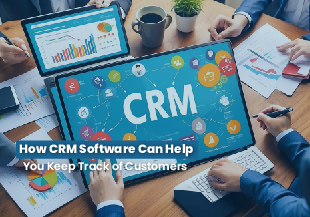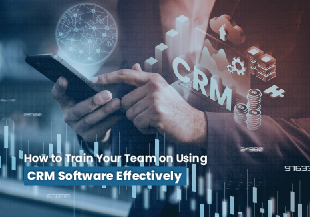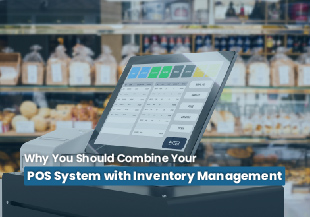ERP systemis a central hub for storing and managing business data and helps businesses to take this data efficiently. It gives decision-makers a complete view.
What is Digital Transformation? The use of technology to make business processes smoothly and efficiently, products, and services better. It helps companies work more efficiently and effectively, reduce risks, and find new ways to make money. It is different from Enterprise Resource Planning (ERP). ERP is a system that supports digital transformation efforts. It changes how we live, work, play, and connect with others. It makes things simpler and better, even things we've always done the same way. Here the role of ERP in digital transformation:
Integration of Business Processes
ERP software is a central hub for storing and managing business data and helps businesses to take this data efficiently. It gives decision-makers a complete view of the business and removes data silos by simplifying complex processes. ERP supports digital transformation by creating a flexible and connected foundation for business activities. It also encourages teamwork, improves communication, and enhances collaboration across different departments.
Real-time Visibility and Analytics
Organizations need an ERP software that offers a complete view of their business, allows customer interactions, and enables personalized service. This helps improve customer satisfaction and build long-term relationships. It also leads to better reporting, monitoring, and overall performance.
Automation and Process Optimization
ERP software automates repetitive tasks and makes data easily accessible to everyone . It supports different tasks even if they are related to finance, production, sales, purchasing, and warehouse management that is beneficial for businesses. By removing data silos, ERP improves communication and data flow across all departments, leading to better process optimization.
Customer-Centricity and Improved Experiences
Digital transformation focuses on both improving internal processes and providing great customer experiences. ERP systems play a key role in this by offering a complete view of customer interactions. By combining customer data from different sources, ERP helps organizations understand customer behaviour, preferences, and needs. This allows companies to deliver personalized experiences, improve customer satisfaction, and build long-term relationships.
Scalability and Flexibility
As organizations grow and change, their requirements and preferences also change, they need systems that can grow and adapt to all these changes. It provides the scalability and flexibility needed to support business growth and change according to their needs. Even if expanding into new markets, adding new products, or adapting to new regulations, ERP systems can be customized to meet specific needs which become helpful for business. This flexibility ensures that organizations can easily integrate new technologies, processes, and business models during their digital transformation journey.
How Digitalization Is Transforming Manufacturing
Digital technologies like Artificial Intelligence, Machine Learning, and Cloud computing help companies to improve performance and compete better. That is the best choice. Here are ways of which digitalization is changing manufacturing:
Develop a clear vision and strategy
Secure executive buy-in and establish leadership
Identify gaps and opportunities.
Create a detailed roadmap outlining the steps
Implement pilot projects to test digital solutions
Collect feedback and measure results.
Adjust strategies based on learnings and outcomes.
Integrate successful pilot projects into broader business
Scale up digital initiatives across the organization.
Ensure interoperability and alignment with existing systems
Continuously monitor and analyze the performance
Make data-driven adjustments to improve efficiency
Foster a culture of continuous learning
Clear and Organize Your Data
Data is the foundation of digital transformation. To effectively leverage data, organizations need to:
Identify all data sources within the organization.
Conduct a comprehensive audit to assess data quality
Eliminate redundant and obsolete data.
Cleanse data to remove errors, inconsistencies
Standardize data formats to ensure consistency
Normalize data to facilitate integration
Establish data governance policies
Define data ownership and responsibilities.
Implement data management features and practices
Organize data into logical structures
Use metadata to enhance data discoverability
Ensure scalable and secure data storage solutions.
Standardize Your Technology Platform
Standardizing the technology platform is essential for ensuring interoperability, scalability, and efficiency. This involves:
Assess current technology stack
Prioritize solutions that offer flexibility, scalability
Implement selected technologies a
Ensure seamless data flow and interoperability
Use APIs and middleware to facilitate integration.
Establish technology standards and protocols.
Harmonize disparate systems and processes.
Create a unified technology platform
Provide training and support to employees
Encourage a culture of collaboration
Monitor and address any challenges
Observe Your Customer, Employee, and Supplier Processes
Understanding the processes of stakeholders—customers, employees, and suppliers—is essential for effective digital transformation. This involves:
Map out existing processes for customers, employees
Document process flows, touchpoints
Identify pain points, inefficiencies
Engage with stakeholders to gather feedback
Conduct surveys, interviews, and focus groups.
Use feedback to inform process improvements
Analyze processes to identify bottlenecks
Use process optimization techniques
Implement changes to streamline processes
Use digital solutions and technologies to automate processes
Implement solutions like CRM, ERP, and SCM systems
Ensure processes are aligned with digital transformation goals.
Plan on Creating Analytics and Insights for These Processes to Monitor All Functions in Real-Time
Creating analytics and insights is essential for monitoring and optimizing business functions. This involves:
Collect data from various sources, including customer interactions
Integrate data into a centralized data repository or data lake.
Ensure real-time data flow and accessibility.
Use advanced analytics solutions and techniques
Develop dashboards and visualizations to present insights
Create key performance indicators (KPIs) and metrics to measure performance.
Implement real-time monitoring systems to track business functions
Use automated alerts and notifications to identify
Provide real-time reports to stakeholders for informed decision-making.
Use insights to drive continuous improvement initiatives.
Conduct regular reviews and assessments of analytics.
Adjust strategies and processes based on data-driven insights.
These steps collectively approach digital transformation, ensuring that organizations can effectively leverage digital technologies to enhance efficiency, innovation, and competitiveness.






 Chat with Prismatic Bot
Chat with Prismatic Bot